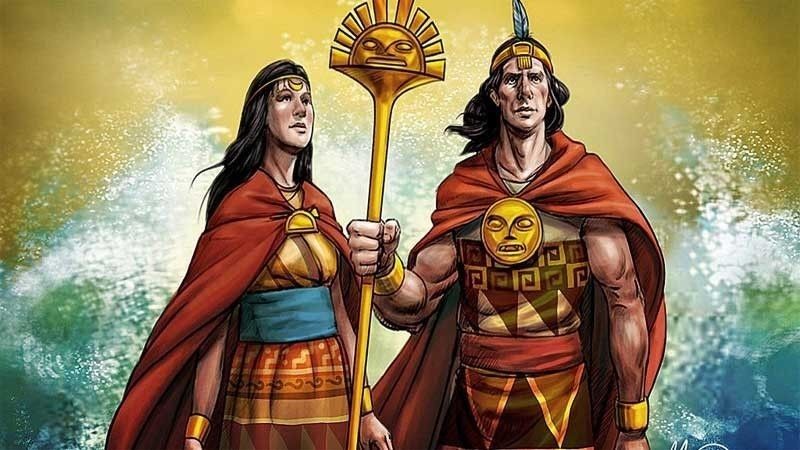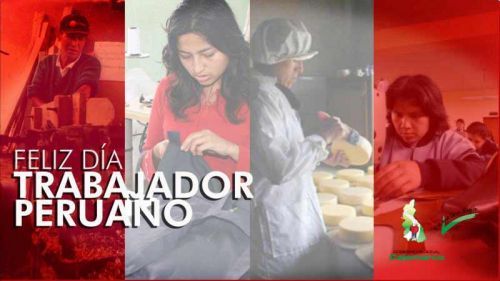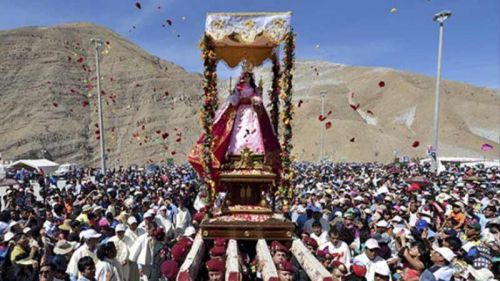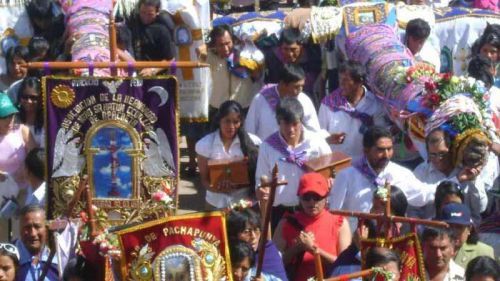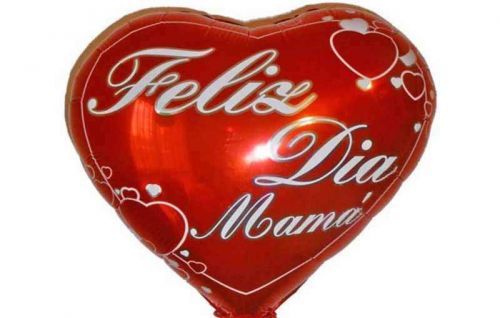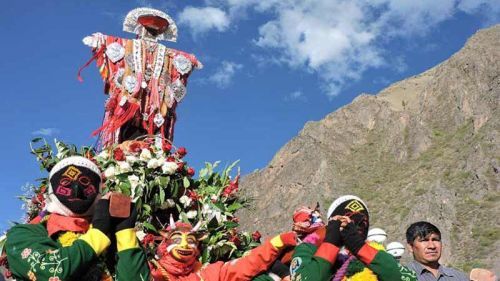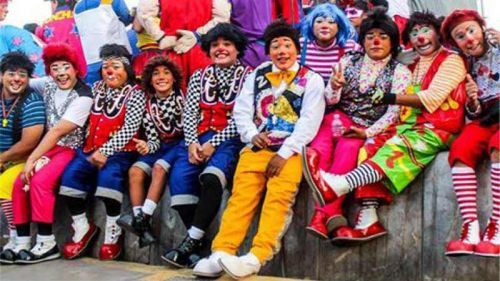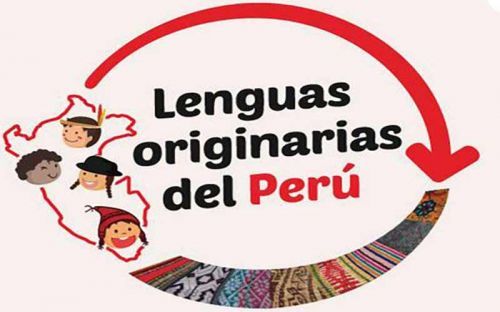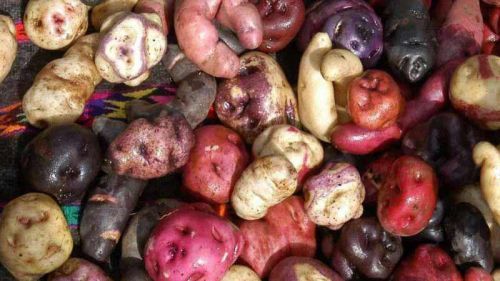The legend of the Rod of Gold is a beautiful story about the origins and the foundation of the city of Cusco that became the historic capital of the Inca Empire from the 13th until the 16th-century before the Spanish conquest. The story also mentions Manco Capac, who was the first governor and founder of the Inca civilization in Cusco. He is as well a main figure of Inca mythology.
The Legend of the Rod of Gold
In ages long past there was nothing, but wilderness and the people lived like beasts. There were no villages, no houses, and no cultivated fields. No one wore proper clothes, for as yet they did not know how to weave cotton or wool.
They lived in twos or threes wherever they chanced to find shelter, beneath overhanging rocks or in caves in the ground. Like animals they ate wild plants and the roots of trees, also fruits that grew without cultivation; and they ate human flesh. They covered their bodies with leaves and bark and furs, and some even went unclothed. They were like deer, like creatures of the wild, and like beasts they had no regular marriages, but lived first with one and then another.
But Our Father the Sun took pity on them and sent down from the sky his own son and daughter to teach them the worship of the Sun, to give them laws to live by, and to show them how to build villages, grow crops, and tend livestock.
Our Father the Sun sent his two children down to Lake Titicaca and ordered them to proceed from there in any direction they chose. But wherever they stopped to eat or sleep they were to push in the ground a rod of gold, half the length of a man's arm and two fingers thick, which he had given them as a sacred sign. Wherever the rod could be made to disappear in the earth with a single thrust, then there in that place they would found their city and their royal court. His parting words were these:
"When all the people have been made your subjects, you must rule them wisely and justly, with pity, with mercy, and with tenderness. I want you to treat them as a compassionate father would his beloved children, and in this you must imitate and resemble me, for it is I who take care of the world and give it light and warmth, making pastures and fields grow green, making trees give fruit, and livestock bear offspring; making rain and fair weather, and not failing to pass through the sky each day to see what the people might need and to aid them and comfort them, being their provider and their benefactor. As you are my son and my daughter, you must be like me. You must go into the world and provide for these people who have lived like beasts. I therefore establish and name you rulers over all those races whom you will lift up with your good instruction, good works, and lawful government."
When Our Father the Sun had spoken his will, he took leave of his two children; then they came forth from the waters of Lake Titicaca and traveled northward. Wherever they stopped along the way, they tried to drive the rod of gold into the earth. But they could not make it disappear. At last they entered a little shelter, or resting place, called House of the Dawn. It was given this name because our lord, the Inca, emerged from it just at dawn, and from there he proceeded with his wife and sister, our Coya, to the Valley of Cuzco, which at that time was a wild and rugged land.
The first stop they made in this valley was at the hill called Rainbow, on the south side of the present city. There they tried the earth with the rod of gold, and with a single stroke they drove it in and it was not seen again. Then our Inca said to his wife and sister:
"Our Father the Sun commands us to stop in this valley and build our city so that we may carry out his wishes. Let us each go in a different direction and gather the people together. We will give them instructions and begin the work Our Father the Sun has ordered us to do."
Then our first rulers went out from the hill called Rainbow, and the Inca went north and the Coya went south. As they proceeded through the wilderness, they told all the men and women they met how their Father the Sun had sent them from the sky to be rulers and benefactors, to bring the people out of the wilds and thickets, to teach them to live in towns, and to give them proper food.
The people were astonished to see the fine clothes and adornments Our Father the Sun had given his two children. And they saw the pierced earlobes, greatly stretched, that we Incas who are their descendants still have today, and they saw in their faces and could tell by their manner of speaking that they were indeed the Sun's children, come to provide towns that the people might live in and food that they might eat; and these promises made them eager. They believed what they were told and adored the Inca and the Coya and worshipped them as children of the Sun and obeyed them as rulers.
The people discussed it among themselves. They spoke of the marvelous things they were seeing and hearing. Then they assembled in a great throng and followed where our rulers led them.
When our royal leaders saw how many people had gathered around them, they ordered some to provide food from the field so that they would not again be dispersed by hunger. They ordered others to build houses by copying a model that the Inca himself gave them. In this way our imperial city of Cuzco came to be populated, and it was divided into halves, called Upper Cuzco and Lower Cuzco. Those who had been summoned by the Inca were settled in the upper half, while the lower half was reserved for those who had been brought by the Coya. The two halves lived together as equals, as brother and sister, as left arm and right arm. And all the towns and villages that were founded later were divided likewise.
When the city had been established, our Inca showed all the men what their particular duties would be. He showed them how to break the earth and till it, how to sow corn and quinoa and all the many vegetables; and he showed them which ones were good to eat and nourishing. He showed them how to make the foot plow and the other tools they would need, and how to divert streams and make canals to irrigate their fields. He even taught them to make sandals.
Meanwhile, the Coya instructed the women, taught them to spin cotton and wool, to weave, and to make clothes for themselves and for their husbands and sons. She showed them how to perform all the duties of the home. And so, our rulers taught their first subjects everything pertaining to human life, and the Inca was master of men and the Coya was mistress of women.
Then the people saw that they were changed and that they had received great benefits. Joyfully they went out into the mountains to spread the news about the Sun's children and to tell all those they met about the wonderful things that had happened. As proof they brought with them their new clothes and their new food, and they told how they were living in houses. The people of the wilds gathered in great numbers and came to see for themselves what our first parents had done. When they were satisfied that what they had been told was true, they stayed on and served the Inca and the Coya and obeyed them.
In this way the word was passed from mouth to mouth, and in a few years an enormous number of people had been brought together, enough so that in six or seven years' time the Inca was able to form an army to defend himself and also to bring in by force those who would not come willingly. He taught the use of bows and arrows, spears, clubs, and other weapons that are still known today.
To tell you briefly of the deeds of our first Inca, I will only mention that toward the east he established his control as far as the river called House of Many Colors, and on the west his lands extended 32,000 paces toward the river called Great Speaker. In the south he won 36,000 paces toward Quequesana, and in that region our Inca built a hundred towns, the largest of which had a hundred houses, the others being smaller according to the natural advantages of each site.
These, then, were the first beginnings of the city you see today. These were the beginnings of our great empire. And these were our first rulers, from whom our later rulers were descended. Our first Inca was called Manco Capac, and our Coya was Mama Ocllo. They were brother and sister, as I have told you. And they were children of the Sun and the Moon.


